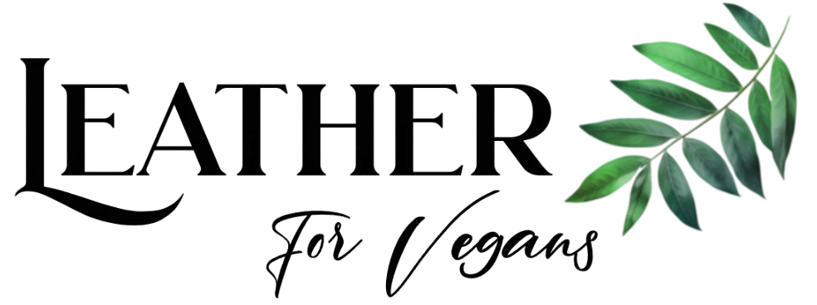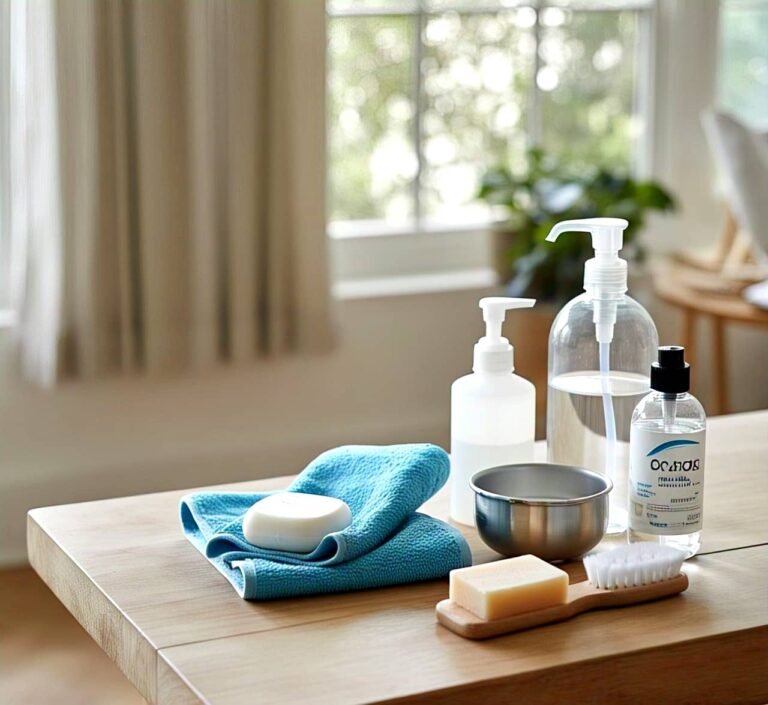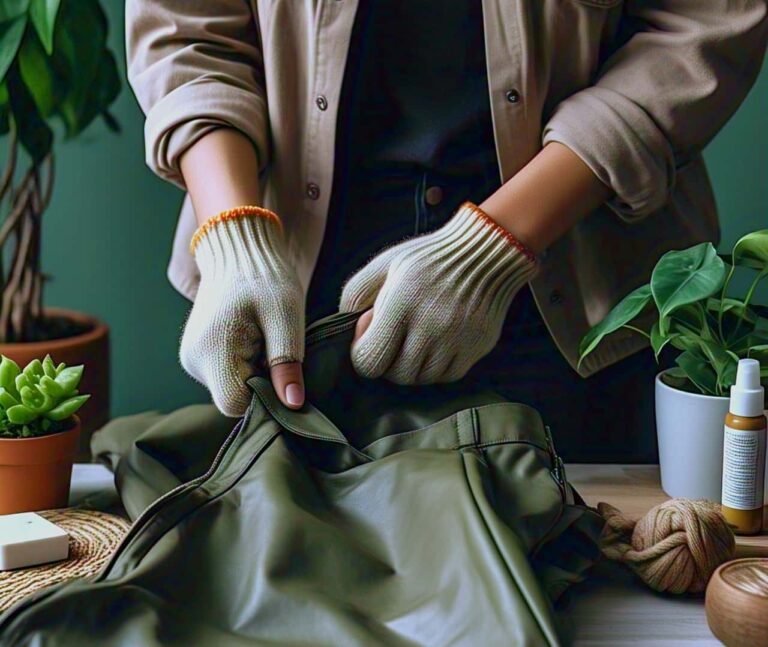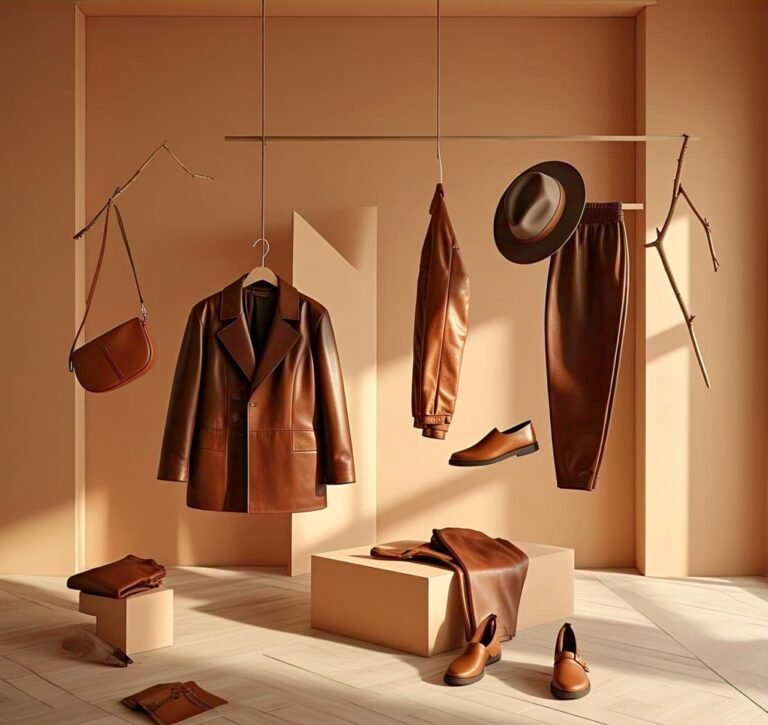What is Synthetic Leather? What Are Its Types & Benefits
Synthetic leather is creating a stir in the industry and earlier people used to just keep looking at real leather, but now they have understood that it is better to use synthetic leather to save animals lives. It is the best alternative to real leather that comes with stylish, eco-friendly and durability.
There are many different types of synthetic leather available in the market like PVC leather, PU leather, microfiber leather, plant-based leather and bonded leather. It is very popular in fashion, furniture, automotive and accessories.
In this article, you will get complete information about what is synthetic leather, what are its types and the method of making it from scratch.
What is Synthetic Leather?
If we tell you in simple words then it is an artificial material which gives the look and feel of leather, but to make it, the skin of any cow, bull or animal is not used. This leather is eco-friendly and a great alternative for vegans.
Synthetic leather is an artificial material which looks and feels like real leather, but is made of a mix of plastic, resins and fiber. It is durable, waterproof and easy-to-maintain, and the best part is that no animal is sacrificed!
- It is mainly a mix of plastics, resins, and fiber materials that give the texture, durability and shine of real leather.
- It is used in clothes, shoes, bags, furniture, car seats and many other places.
- It is not expensive like real leather, so even a common man can use leather without any fear.
- It is waterproof and easy-to-clean, so you can use it without any tension.
History of Synthetic Leather
Germany did the first experiment in the 1900s. During the First World War, there was a shortage of real leather in Germany, so scientists developed a new material that could be a replacement for leather.
The first commercial version of faux leather came in the 1920s.
PVC and PU leather came in the 1960s-70s which are still used all over the world.
Nowadays new types of synthetic leather have also come in the market such as plant-based and silicone leather which are also eco-friendly.
Now you’ve understood, right? This synthetic leather is not a new thing.
Types of Synthetic Leather
Now, comes the real thing, how many types of synthetic leather are there and how is it made!

1. PVC Leather (Polyvinyl Chloride Leather)
This is the first and the cheapest synthetic leather that came in the market. It is made from PVC resin and plasticizers.
Making Process
- First the PVC resin is made soft and flexible with the help of plasticizers.
- Then it is applied on fabric or fiber backing (like polyester or cotton).
- After this, texture and embossing is added to give it the look of leather.
- After coating and finishing it becomes waterproof and durable.
Pros:
- Cheap, durable and waterproof.
- Maintenance is low, easily cleaned.
Cons:
- It is a little stiff.
- Not very breathable, can feel sticky in summer.
2. PU Leather (Polyurethane Leather)
This is a premium type of synthetic leather, which is closest to real leather. It is softer and more breathable than PVC leather.
Making Process
- PU resin is coated on a fabric backing.
- A foam layer is added which gives it a soft and cushiony feel.
- Texture and embossing are done so that it looks like real leather.
- Protective topcoat is applied which increases shine and durability.
Pros:
- Lightweight, soft and gives the feel of natural leather.
- More breathable and comfortable than PVC.
Cons:
- Can absorb a lot of moisture, can get spoilt quickly.
- It is a little expensive than PVC leather.
3. Plant-Based Leather (Vegan Leather)
This is eco-friendly and a favorite of nature lovers! It is made from pineapple leaves, apple waste, mushroom or cactus.
Making Process
- First we collect plant waste (pineapple leaves, mushroom spores, etc.).
- Then we dry it and process it and convert it into fiber.
- It is coated and give finishing so that it feels like leather.
Pros:
- Nature-friendly, biodegradable and sustainable.
- It is light and breathable.
Cons:
- It is new in the market so it is a bit expensive.
- Durability is still a bit less compared to PU leather.
4. Microfiber Leather
This is a premium version of synthetic leather which can give a better feel than real leather!
Making Process
- Microfiber fabric is covered with PU coating.
- It is treated in multiple layers so that it gets the texture of real leather.
- It gives a soft and durable finish.
Pros:
- Super soft, durable and an exact copy of real leather.
- Lightweight and breathable.
Cons:
- It is a bit expensive.
- It is used more in high-end market.
5. Bonded Leather
This is a type of leather which is a mix of real and synthetic leather.
Making Process
- Recycled leather waste and polyurethane are mixed.
- It is pasted on fabric backing.
- The final look is given by embossing and coating.
Pros:
- Cheap and environment-friendly because waste is reused.
Cons:
- Durability is less.
- There is a chance of chipping quickly.
6. Silicone Leather
This is a new and high-tech synthetic leather which is made from silicone material.
Making Process
- Silicone resin is coated over a fabric backing.
- It is set through heat and pressure.
- Gives a final waterproof and heat-resistant finish.
Pros:
- Super durable and waterproof.
- Eco-friendly and hypoallergenic.
Cons:
- Expensive.
- Not easily available everywhere.
7. Woven Leather
This is a luxury synthetic leather which is a mix of woven fabric and synthetic fibers.
Making Process
- Synthetic fibers are weaved to create the texture of leather.
- PU or PVC coating is given to increase strength and durability.
Pros:
- Stylish and premium look.
- Lightweight and breathable.
Cons:
- It is used more in the high-end market.
- It is expensive compared to PU leather.
Future of Synthetic Leather
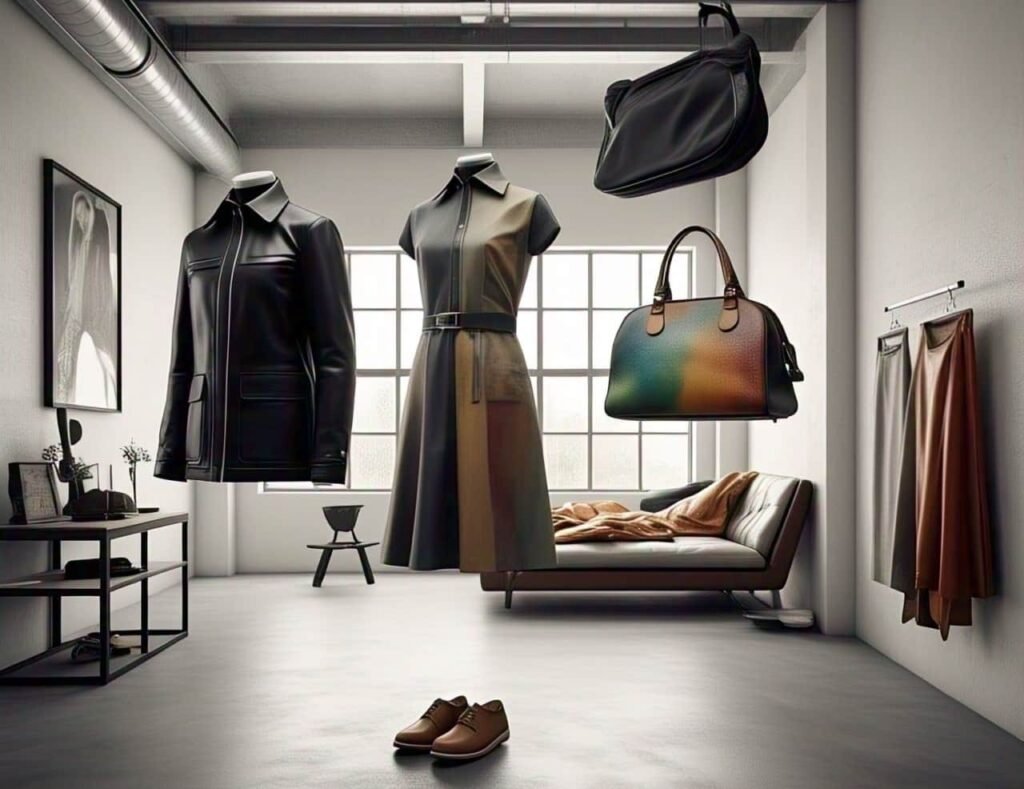
The future of synthetic leather is absolutely solid! Nowadays the world is shifting towards eco-friendly and sustainable options, and the scene of real leather is getting lighter. Do you know why? Because people are no longer interested in killing animals, and are also thinking about the environment. Synthetic leather is the future, and new technologies are making it even more amazing!
What changes will come in the coming time?
Eco-Friendly Materials – Now the era of plastic-based leather is slowly coming to an end. Plant-based leather made from pineapple, mushroom, apple waste and cactus will become more popular in the future.
High-Tech Innovation – Now new research is going on in which bioengineered and lab-grown leather is being made which will give the exact feel of real leather without harming animals.
Entry of Luxury Brands – Earlier synthetic leather was popular only in the budget market, now even big brands are using plant-based and high-end synthetic leather.
Better Durability and Realism – In the future synthetic leather will look even more natural and will be more breathable, soft and long-lasting.
Now you understood that the era of real leather is over, the future of synthetic leather is absolutely bright!
Applications of Synthetic Leather
- Shoes and bags – The biggest craze of the fashion industry!
- Car and bike seats – Durable and waterproof.
- Sofas and furniture – Stylish and cheap.
- Clothes and accessories – Jackets, belts, wallets and what not!
The era of synthetic leather is over. So now leave the real leather and go with the new trend!
Popular Brands of Synthetic Leather
The craze of synthetic leather is increasing, so it is obvious that big brands are also entering in the market. These brands are producing high-quality synthetic vegan leather which looks even better than real leather.
1. Ultrafabrics
- This brand makes high-end luxury synthetic leather.
- Mostly used in automotive, furniture, and fashion industries.
- It is PU-based leather which is soft and breathable.
2. Kuraray Clarino
- This is a Japanese brand that specializes in microfiber leather.
- This leather looks and feels like real leather.
- Shoes, bags, and sports equipment and it is used a lot in the industry.
3. Piñatex
- This is an eco-friendly brand that makes leather from pineapple leaves.
- It is vegan and biodegradable.
- Luxury and sustainable fashion brands are using it a lot.
4. Desserto
- This is a Mexican company that makes cactus-based leather.
- It is super soft, durable and organic.
- Luxury brands are now using it a lot.
5. Mylo by Bolt Threads
- This is a mushroom-based synthetic leather.
- This brand is working with brands like Gucci and Adidas.
- 100% biodegradable and looks like real leather.
How is Synthetic Leather Made?
The process of synthetic leather is a little scientific, but don’t worry, first understand that the base of synthetic leather is made of plastic, resins and fibers, which gives it the look and texture of real leather.
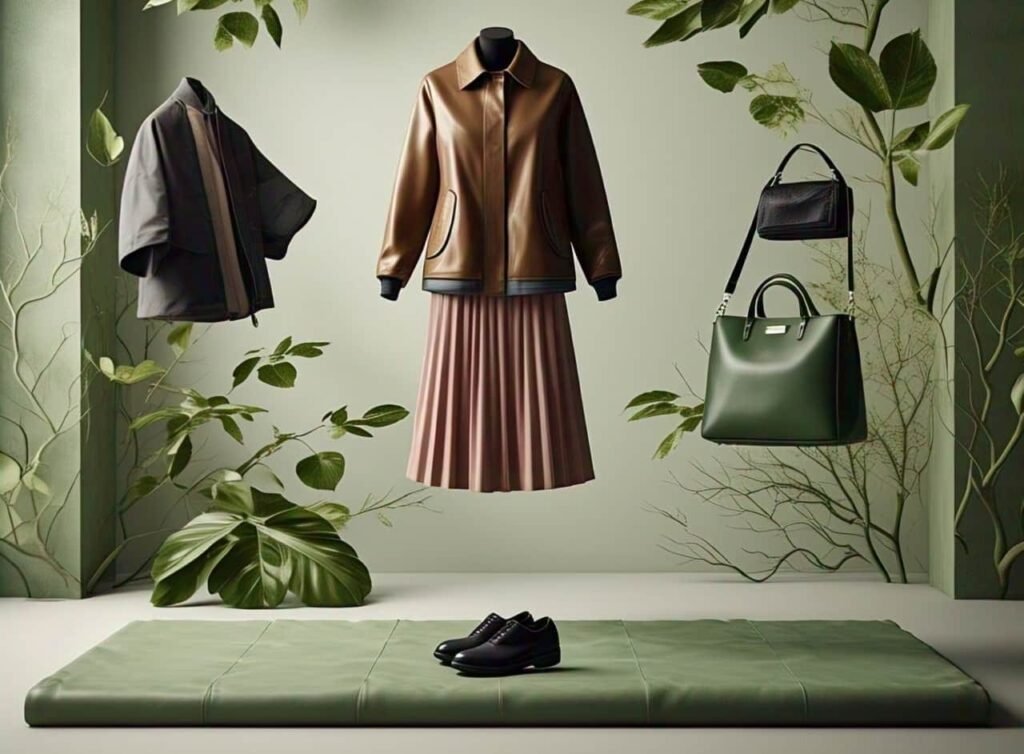
Step-by-Step Process
1. Material Selection
First it is decided whether the leather will be made of PVC, PU, microfiber or plant-based.
PVC and PU leather are plastic-based, microfiber and plant-based ones are eco-friendly.
2. Base Fabric Preparation
Synthetic leather has a base fabric underneath it which provides support.
It is polyester, cotton or a fiber mix.
3. Coating Process
PVC or PU is coated over the fabric.
Pressure and heat are used in this process so that the material sets.
4. Texture and Embossing
Now it is time to give the synthetic leather a real leather-like look.
The leather texture is applied over it using an embossing machine.
5. Coloring and Finishing
Now color and final polish are applied.
A last protective coating is given for shine and softness.
An awesome synthetic leather is ready! This process seems a little technical, but it is quick and efficient as compared to real leather.
Why Consider Synthetic Leather Over Real Leather?
Why is synthetic leather better than real leather, do you want to know the reason? See, in today’s times, everyone is looking for sustainability and cruelty-free options. Synthetic leather is not just an alternative, it is a better choice.
- Cruelty-Free – The skin of animals does not get removed.
- Affordable – The cost of real leather is very high, synthetic leather does not have that problem.
- Low Maintenance – Real leather needs moisture and polish, it is done with just one wipe.
- Waterproof and Durable – Synthetic leather does not spoil in water.
- Eco-Friendly Options Available – Plant-based and biodegradable synthetic leather has also arrived.
The era of real leather is now slowly coming to an end. Synthetic leather is the new king!
Common Myths About Synthetic Leather
People have many misconceptions about synthetic leather. Let’s break all the myths.
Myth 1: The quality of synthetic leather is low.
Nowadays high-end synthetic leather is even better than real leather.
Myth 2: It gets spoilt quickly.
If you buy good quality leather, it easily lasts for 5-10 years.
Myth 3: It is not breathable.
Microfiber and PU leather are quite breathable.
Myth 4: It is only used for cheap products.
Even luxury brands are now adopting synthetic leather.
Clear all these misconceptions and understand the real value of synthetic leather.
Advantages and Disadvantages of Synthetic Leather
Nothing is perfect in this world and synthetic leather also has its own pros and cons.
Advantages
- Cheap and easily available.
- Waterproof and easy to maintain.
- Eco-friendly and cruelty-free options available.
- Lightweight and flexible.
- Color and texture options are available in abundance.
Disadvantages
- PVC leather can be harmful to the environment.
- It does not have the natural aging effect of real leather.
- Heat resistance is a little low.
Frequently Asked Questions
1. What is synthetic leather?
Synthetic leather is an artificial material that gives the look and feel of real leather, but without using the skin of any animal. It is made of plastics, resins, and fiber materials that make it durable, waterproof and easy-to-maintain. Due to being eco-friendly and budget-friendly, its demand is increasing.
2. How is synthetic leather made?
Its process is simple – plastic coating is applied on base fabric (like polyester or cotton), it is treated with heat and pressure and given texture and shine like real leather. Different types of synthetic leather use different coatings and processing techniques.
3. Is synthetic leather better than real leather?
Synthetic leather has its own advantages – it is cheap, waterproof, maintenance-free and cruelty-free. It does not crack like real leather and has different colors And it is available in designs. Nowadays high-end synthetic leather is becoming softer and more durable than real leather.
4. Is synthetic leather environment-friendly?
This depends on the type of synthetic leather. PVC-based leather may be a little harmful, but PU, microfiber and plant-based leather are eco-friendly options. Nowadays biodegradable and sustainable synthetic leather is also available which does not cause pollution.
5. Is synthetic leather waterproof?
The biggest plus point of synthetic leather is that it is waterproof. There is no chance of it absorbing moisture, that is why it is used a lot in rain jackets, car seats and furniture covers. Just keep in mind that the quality should be good, then only it will be more durable.
6. Where is synthetic leather used?
It is used in fashion, footwear, automotive, furniture, and accessories. Now synthetic leather is becoming popular in shoes, handbags, jackets, car seats, sofas, belts and even luxury brands. It fits everywhere because it is affordable and durable.
Conclusion
One thing is confirmed that the time of synthetic leather is about to come! Today people are moving towards sustainability and ethical fashion. Now the time of real leather is slowly coming to an end and with new technologies synthetic leather is becoming even more durable, breathable and eco-friendly.
Even luxury brands are now accepting it and people have also started to understand that sacrificing animals without any reason is not good for the nature.
If you want stylish, budget-friendly and ethical choice then synthetic leather is definitely the best option! More new materials and innovations will come in the future which will make it even better. So forget real leather and enter to the world of synthetic leather because this is not a trend, it is the future!
